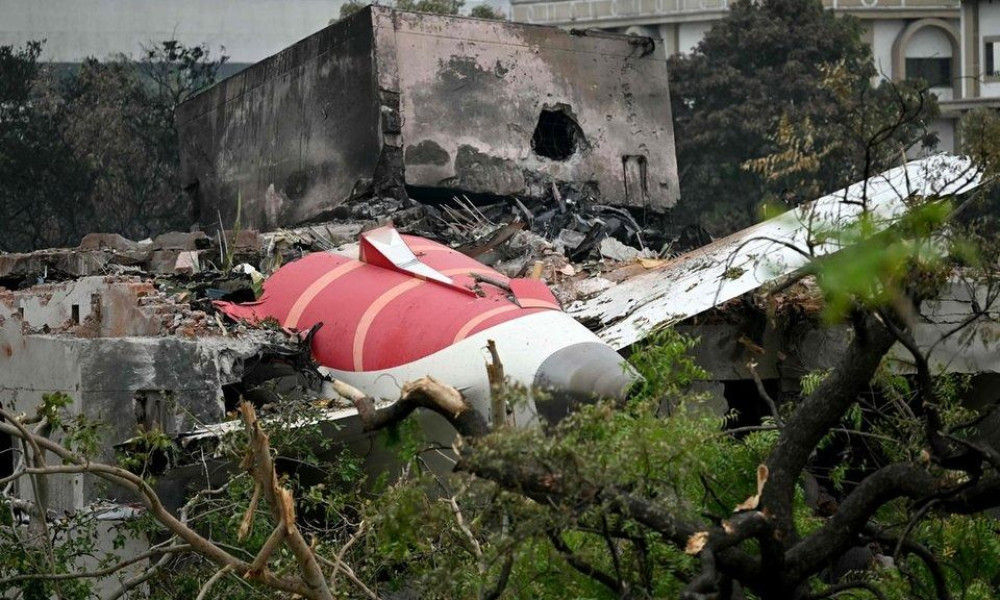In a tragic turn of events, an Air India flight bound for London crashed in Ahmedabad on June 12, leading to the devastating loss of more than 265 lives. This catastrophe has now inevitably cast a shadow over the airline’s ambitious plans to restore its former glory and reach profitability.
As investigations continue into why flight AI171 met with such a calamitous fate, it is significant to note that this crash marks Air India’s first wide-body aircraft accident in 40 years. This sobering fact reminds us of the high stakes involved in the airline industry.
Since the Tata Group acquired Air India from the Indian government in 2022, the airline had been showcasing signs of recovery. Just earlier this month, it reported an operational profit for the first time in decades and was aiming for full profitability by 2027. Yet this tragic incident is likely to derail many of those plans.
The ramifications extend beyond human tragedy. The loss of life and potential liabilities related to the crash, particularly as the plane fell into a densely populated area, could severely strain Air India’s financial resources. However, Tata Sons chairman N. Chandrasekaran has stepped forward by announcing that families of the victims will receive a compensation package of 10 million rupees. This generous gesture, alongside commitments to cover medical expenses for the injured and support in rebuilding the damaged medical hostel, reflects a dedication to addressing the fallout.
For many, Air India holds a nostalgic place in the culture of the nation. Its iconic Maharaja mascot evokes fond memories of travel, and the airline has been well-known for its delicious Indian meals and seasoned staff. Yet, the airline has also faced ridicule from passengers who complain about delays and poor maintenance, all the while battling years of financial losses.
Under Tata’s stewardship, Air India has been involved in an extensive transformation plan. This five-year initiative focuses on modernizing its fleet, elevating staff skills, and upgrading IT systems to create a competitive edge against revered rivals like Emirates. How this tragic event fits into that plan is yet to be seen.
The airline had seen substantial improvements, reducing its losses by over 40 percent since privatization. Reports indicated that Air India had transported 43.5 million passengers in the financial year from April 2024 to March 2025. Just recently, the company announced a comprehensive $400 million fleet upgrade initiative for 106 of its aircraft, which included refurbishing interior elements such as seats and lavatories.
Analysts previously spoke of Air India’s trajectory towards earning sustained profitability. Plans were developing not only for the main airline but also for the low-cost subsidiary, Air India Express. Campbell Wilson, the CEO, expressed optimism about transforming the airline into a self-sustaining entity.
Yet with the recent crash, many of these optimistic projections hang in the balance. An Air India pilot, drawing from more than 15 years of experience, expressed the collective devastation felt among crew members. The questions lingering in the air about what caused the crash are troubling, especially given the airline’s historical safety performance.
The landscape for the airline has grown more complex. Aviation experts, like Sanjay Lazar of Availalaz Consultants, assess the long-term implications of such disasters. They highlight that rebuilding trust with customers and morale among staff will be pivotal as Air India moves forward.
This accident represents a breaking point for the airline’s safety record. Prior to this, there had been no hull losses since 1985, when a tragic bombing incident led to the loss of flight 182. Lazar recounted losing his family in that crash, which he says led to his aspirations of becoming a pilot and a long career at Air India. He believes that despite this tragedy, strong companies typically find a way to rebound.
Yet external factors loom. Trade tariffs from the U.S., regional security tensions, and airspace closures due to ongoing geopolitical conflicts further complicate the airline’s situation. Wilson had previously hinted at needing a $600 million annual subsidy from the government to navigate the resulting financial burden from re-routing flights because of the closure of Pakistan’s airspace.
While the aviation industry grapples with the immediate fallout, the crash could also instill a palpable fear among travelers, potentially leading to decreased demand in the short term. The 12-year-old Boeing 787 Dreamliner was generally considered safe, but scrutiny of Boeing is likely to increase following this incident.
In the aftermath, we see immediate impacts on Tata Group’s stock, particularly its aviation sector, despite the long-term outlook potentially remaining stable. Analysts believe any financial liabilities from the crash will be covered through aviation insurance, suggesting that the broader group may not suffer significant damage.
As we await further details on the crash, the immediate focus for Air India remains on addressing the human loss and restoring confidence while navigating through this challenging time. The road ahead may be fraught with challenges, but like all great flights, resilience can be the key to safely landing on the other side.

